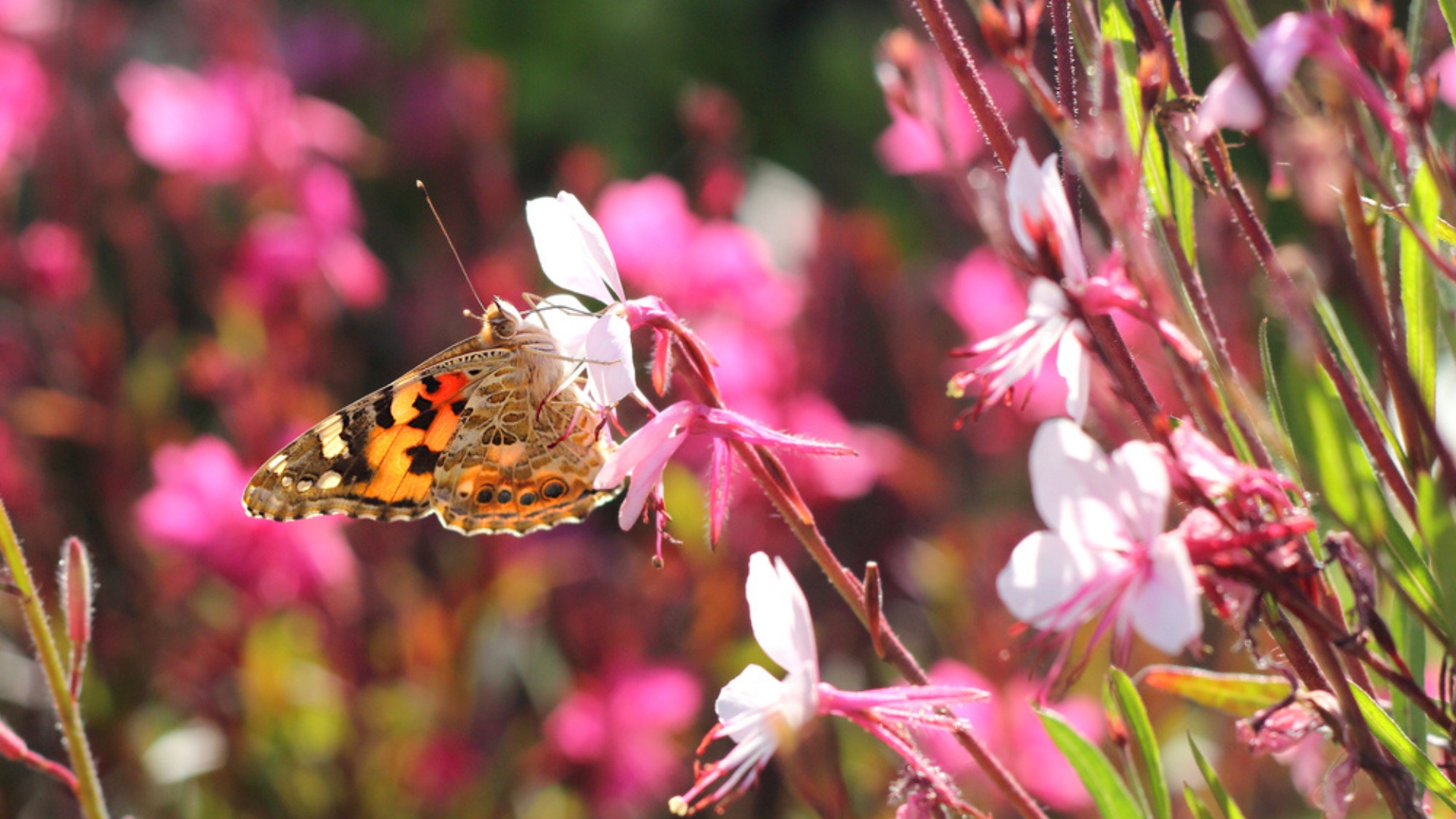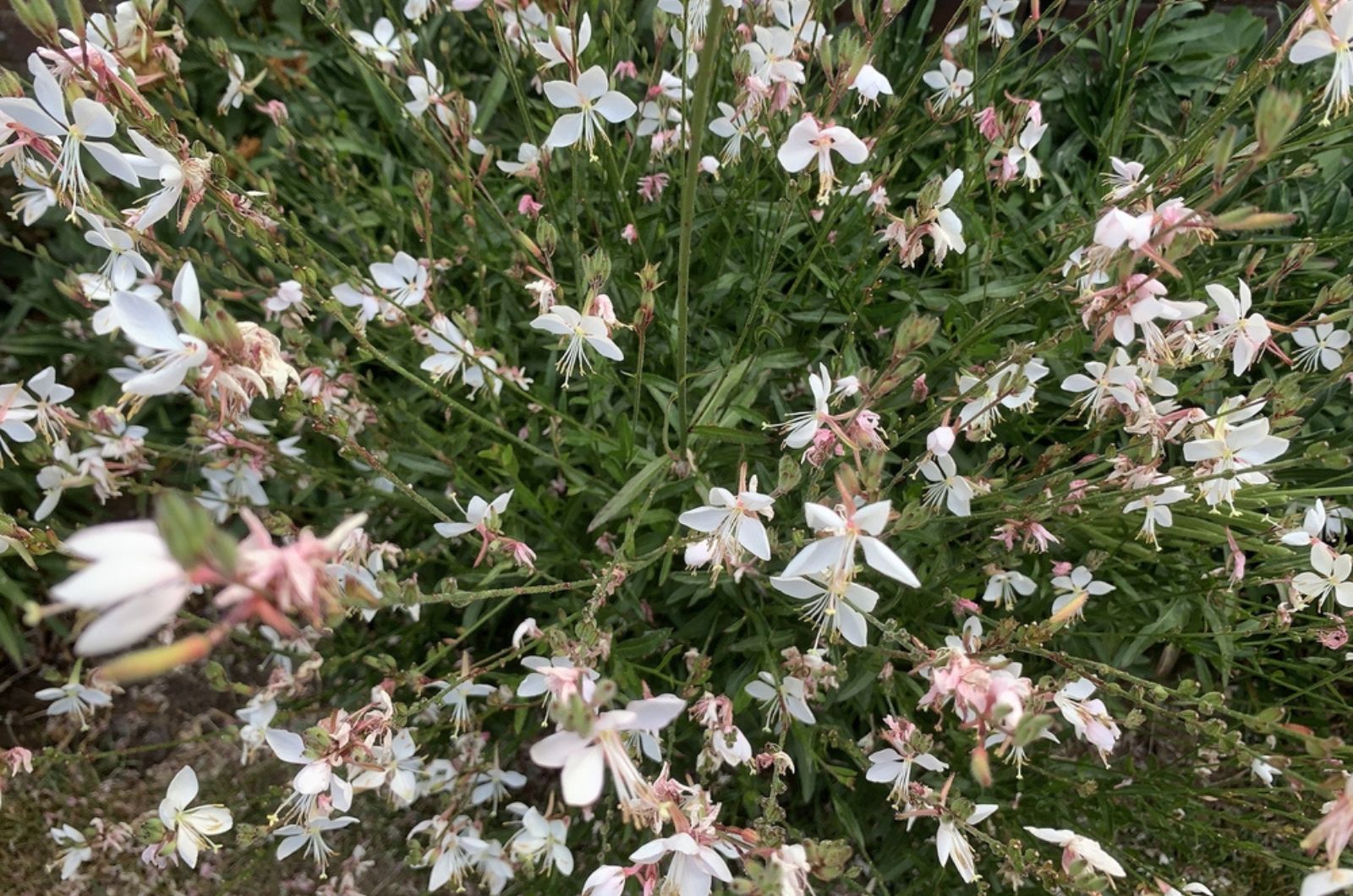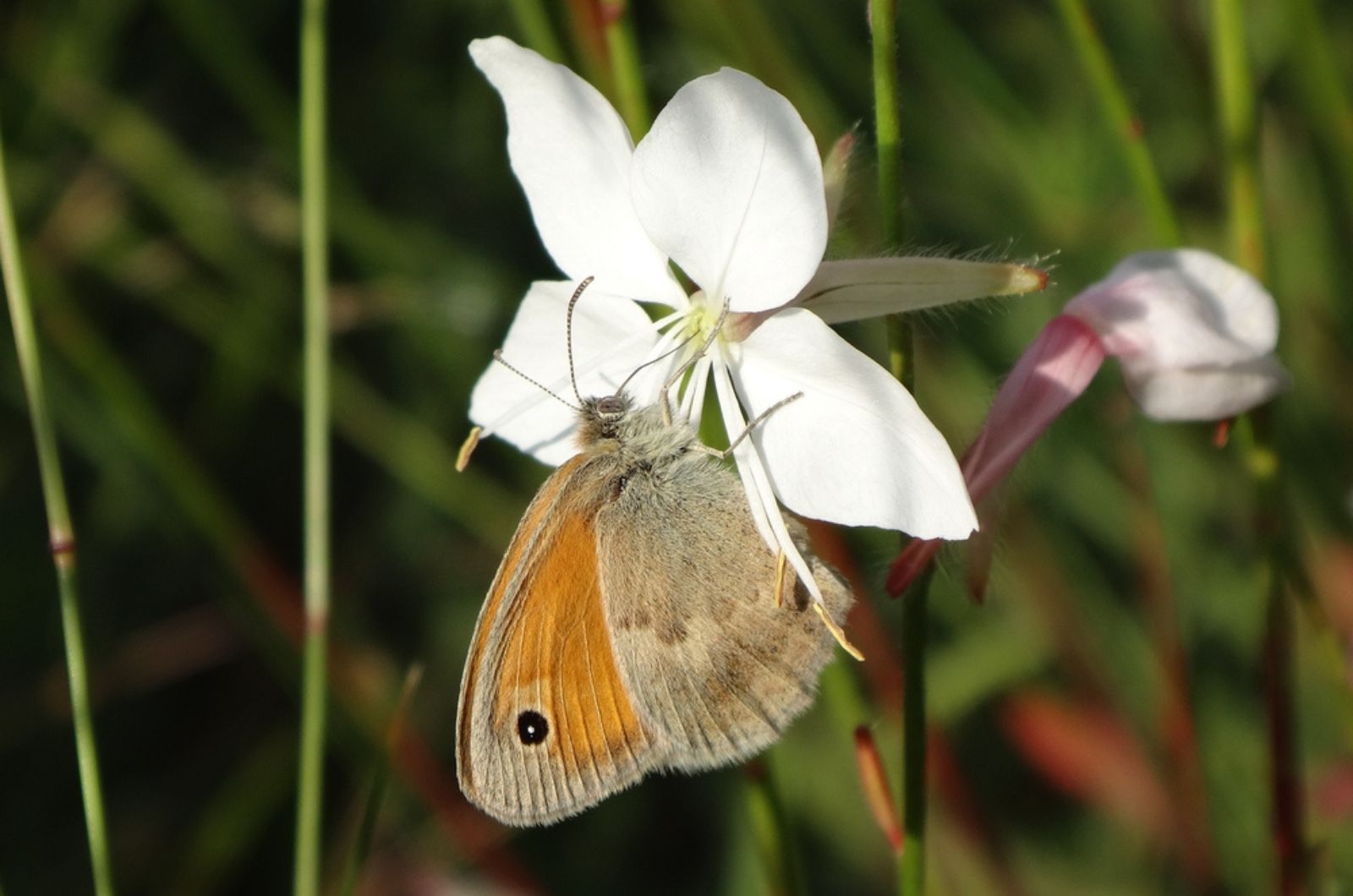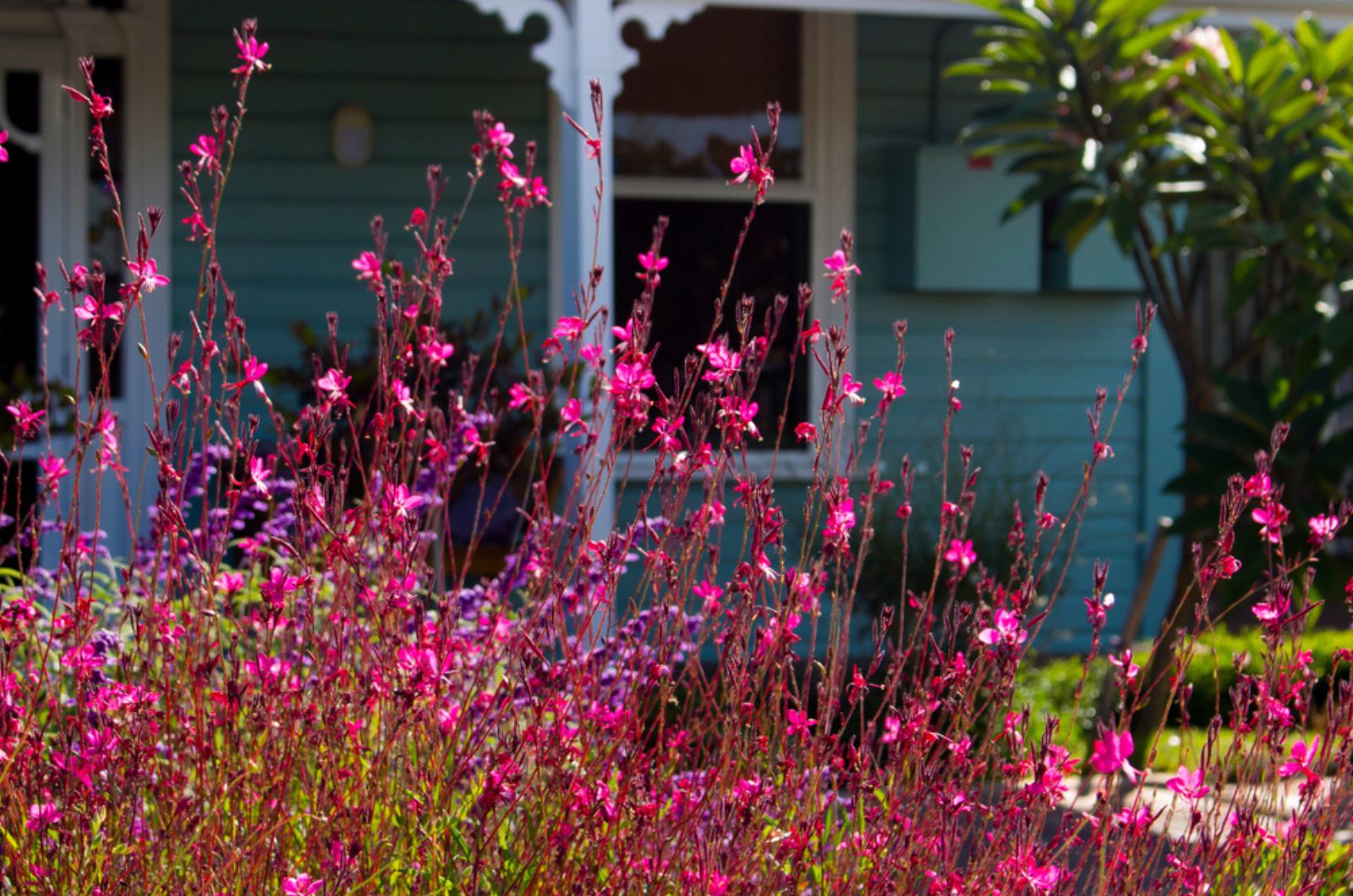Once the petals of our favorite blossoms open, lovely butterflies become regular guests in our gardens.
Every gardener knows how important these creatures are, and I don’t even need to mention the visual delight they bring.
So, we’re on a mission to draw them in. While butterflies fancy many plants, one steals the spotlight.
Allow me to introduce you to a captivating flowering species that will most certainly get the attention of not only butterflies but all the other pollinators, too.
Gaura Is An Ideal Choice For Gardens Of Any Type
Have you ever heard of or seen a gaura flower? It was formerly known as Gaura lindheimeri, but now it’s referred to as Oenothera lindheimeri in botany.
Wondering why this is relevant? Well, its informal name is gaura; if you have trouble finding it, it’s better to know its real name.
Gaura is mainly known for its captivating white and pink blossoms. The blooming season is long and the blossoms will adorn your garden from summer to fall.
But that’s not everything this species has to offer.
The main reason why I added it to my garden is because it’s a native plant. It’s well adapted to our conditions and requires little to no watering. Look, I’m not lazy, but I prefer to stick to the phrase work smarter not harder!
If you need more beneficial creatures in your garden, gaura is perfect for you!
Pollinators And Gaura Are A Match Made In Heaven!
Butterflies enjoy munching on gaura blossoms but they aren’t the only ones. Bees, moths, and other popular pollinators will gladly visit your yard if you have any gauras planted.
If we dig deeper into the features of the gaura species, it’s completely understandable why pollinators love it.
First, the blossoms are clustered, have flat heads, and can endure long exposure to direct sun. This is perfect because butterflies prefer feeding in sunlight.
As mentioned, these are long-blooming plants, and this feature makes them ideal for pollinators since it ensures a constant food supply. If you want to extend the flowering season, the easiest way is to deadhead the spent blooms.
My gauras bloom from June until the first frost, which is way longer than my other plants.
Pollinators prefer blossoms with more vibrant hues, such as pink and red. That’s why I chose the Gaudi Red gaura variety, and I must tell you, butterflies are in love with its pinkish-red blooms!
If You Need A Perennial For A Border, This Flower Is Perfect
Gaura can be used as a focal point in a yard, but for me, it works best in borders. The flower spikes can grow up to 5 feet and the leaves are densely packed, so you’ll be offered some privacy.
If you don’t have a lot of space or you simply enjoy small and compact plants, the Passionate Pink and Corrie’s Gold are the varieties for you.
Now the only missing piece of the puzzle is to figure out how to make gaura thrive.
Believe it or not, they will bloom abundantly if you ensure these three things:
1. Fertilize: I always add compost to the gaura soil in early spring. If you prefer store-bought fertilizers, simply go with an all-purpose, well-balanced fertilizer, such as triple 10.
2. Deadhead: Remove the faded gaura blossoms regularly to encourage the plant to rebloom.
3. Plant in full sun: Ensure a spot that receives a lot of direct sunlight because that’s the only way to get your gaura to flower prolifically.
Gaura is one of the best plants to pair up with petunias, coneflowers, and roses. This ensures a colorful display all season long!
Some gardeners claim that this plant is a short-living perennial, but don’t worry, it can self-seed, so you don’t need to purchase new plants.
Gaura is the plant that truly ticks all the boxes! Add it to your yard today to enjoy its endless benefits season after season!




